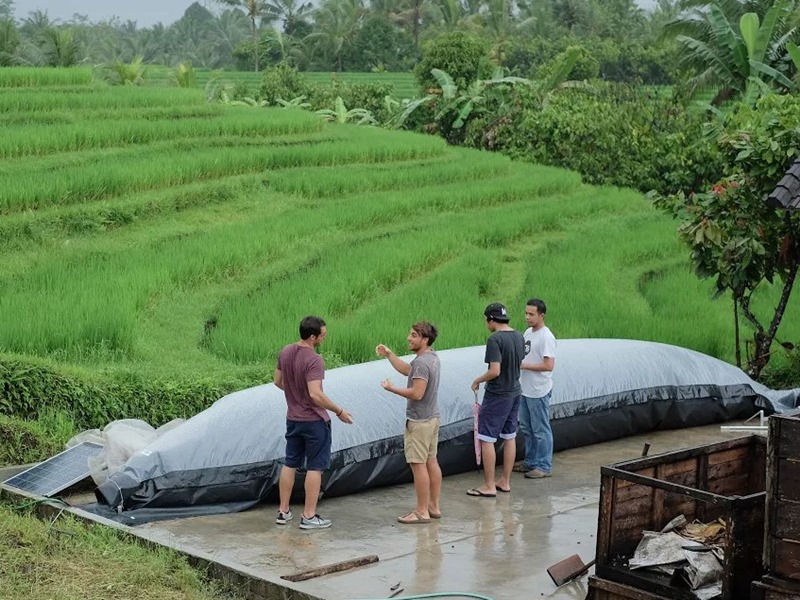

raised of $5,967
0 people have pitched in
0% funded
Kopernik is testing a solar 'bubble' dryer to speed up the post-harvest drying process for cacao beans.
THE PROBLEM
Fermented and dried cacao beans have a higher value compared to raw cacao beans, but most smallholder farmers in Tabanan don't have access to the tools required for this process.
In our previous experiment using a three-tiered fermentation box and a solar dryer with cacao farmers in Tabanan, Bali, we found that the humidity level inside the solar dryer was too high due to the weather conditions and due to the material used for the roofing of the dryer. The plastic sheeting leaked during the rainy season which made the drying environment even worse.
The fermentation technique and solar drying facilities we first experimented with did not actually produce a better dried product compared to traditional methods.
THE SOLUTION
We are testing a solar bubble dryer to speed up the drying process and tackle the water leakage and humidity problems we faced in the previous experiment. The solar bubble dryer has a transparent polyethylene cover that is resistant to UV rays and water. It also has a blower fan (ventilator) to maintain an optimum humidity level.
In this experiment, we will test the quality and efficiency of the drying process, which is divided into two different methods with equal quantities of fermented cacao beans:
FSD (Floor Solar Dryer) - drying the cacao using traditional open air drying methods;
SBD (Solar Bubble Dryer) - drying the cacao with the solar bubble dryer.
We will collect the following information daily from each drying method and measure the following variables over the course of one drying period (approximately eleven days):
the moisture level of the cacao beans;
the temperature (Celcius);
the appearance of the cacao beans;
the flavour characteristics of the cacao beans; and
the drying period needed to reach optimum moisture level.
At the conclusion of our research, we will analyze the results from each drying method, determining how long it took to achieve the optimal moisture level of cacao beans which is 6-8%.
THE EXPECTED IMPACT
We are working with a cacao processing unit and its members in Tabanan Bali who we hope will benefit from a higher income from a more efficient drying process for their harvests. This project is one of Kopernik’s experimentation projects, a series of small-scale, low-investment tests of simple ideas with the potential to reduce poverty.
PROJECT COST
Project Implementation & Technology
Costs associated with project coordination and the technology
$4,472
Monitoring & Evaluation
Costs associated with data collection and analysis
$501
Administration Fee
Cost of transferring payments internationally, processing online donations (5%) and a contribution to Kopernik's operational costs (15%)
$995
Total $5,968
Kopernik Solutions provided a sub-grant to a trusted partner organisation who is implementing this project.




![[object Object]](https://api.kopernik.info/pictures/project/Improving Drying Processes_The Solar Bubble Dryer Phase One_02.jpg)
